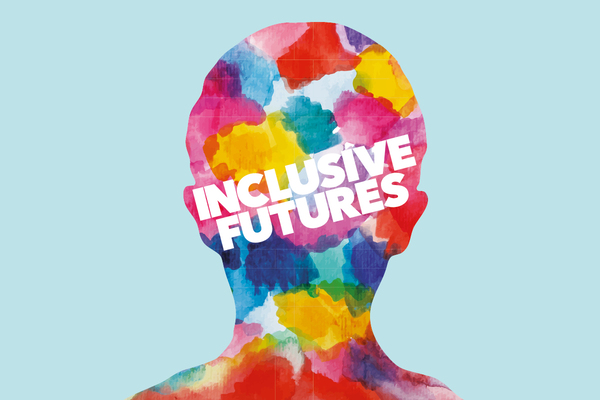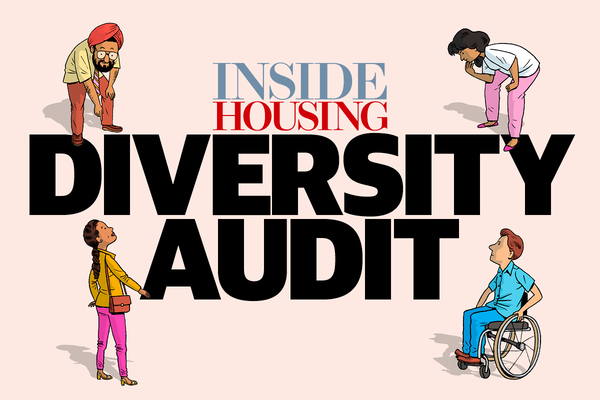You are viewing 1 of your 1 free articles
Complacency led us to drop out of LGBT-friendly employer list
Last year Metropolitan Thames Valley failed to make a top 100 list for the most LGBT-friendly organisations for the first time. Geeta Nanda explains how this was a catalyst for the organisation to change
Inside Housing’s Inclusive Futures campaign aims to promote diversity and inclusion among housing’s leadership teams
We all know that it makes business sense to have a diverse and inclusive workforce that reflects the communities we serve.
Encouraging people to be their authentic selves boosts productivity and improves well-being, in turn contributing to the performance of the organisation.
Research from management consultancy McKinsey supports this, showing that gender-diverse companies are 15% more likely to outperform their peers.
For ethnically diverse organisations this jumps to 35%.
So why is it so hard to achieve? And haven’t we been talking about this as a sector for years, with little change?
I believe that complacency is an ever-present danger, as we discovered to our detriment. While we had made significant progress in the LGBTQ+ area, in 2018 we found out that we had not moved far enough, or as fast as other organisations.
“Encouraging people to be their authentic selves boosts productivity and improves well-being, in turn contributing to the performance of the organisation”
Dropping out of the Stonewall UK Workplace Equality Index top 100 last year and falling to position 188 was a huge blow.
Metropolitan had been in the top 100 every year since the inception of the index, something no other housing association had achieved. We were there at the start.
On reflection, this setback was an important catalyst for change and an opportunity to take stock, find out where we had gone wrong, and ask “how can we regain our sparkle?” In doing so we discovered a new purpose, mission and sense of urgency.
The partnership of Metropolitan with Thames Valley Housing gave our efforts extra impetus, creating an expanded team with fresh ideas and perspectives.
Our journey started with data capture and forensic analysis. Detailed demographics allow an organisation to ask difficult questions of itself, such as why it isn’t attracting enough people from a specific group.
Low figures can also be a sign that individuals do not want to, or do not feel comfortable to, disclose their status.
Action should follow analysis and we discovered important drivers including talent attraction and selection, workplace culture, and career development.
“Detailed demographics allow an organisation to ask difficult questions of itself”
In January, Stonewall published the index for 2019 and I am pleased to report that we have climbed 34 places to 154. Taking our foot off the pedal has meant it will be an even tougher slog to get back in the top 100, but we intend to do this in an honest and meaningful way.
Although the index is focused on LGBT inclusion in the workplace, and an index isn’t everything for us, it establishes useful criteria applicable to other areas of diversity. For example, we know that people from BAME backgrounds are under-represented at board level.
So I was hugely encouraged when, in October last year, 20 Metropolitan Thames Valley customers and colleagues joined our ‘Black on Board’ training programme. Delivered by race equality charity Olmec, the programme provides people from ethnic minorities with the right skills, knowledge and experience to apply for board positions.
Ensuring that gender, race or sexual orientation are not the only focus – to the detriment of faith or disability – is an important consideration and challenge.
And while progress is being achieved in these areas, the dial on social mobility is all too often going in the wrong direction.
When I talk to colleagues within the organisation, they tell me that Metropolitan Thames Valley is a diverse place to work. But others encourage me to press on, as the journey we have started is far from over.
This is not about hiring ‘diverse’ people or prioritising colleagues based on protected characteristics.
“The solution lies not with HR or equality, diversity and inclusion experts, but with everyone at all levels across an organisation”
While compliance is a starting point, legislation should not be the driver. Promoting equity and treating people with compassion and dignity must tie in to core principles. We are learning that the solution lies not with HR or equality, diversity and inclusion experts, but with everyone at all levels across an organisation.
Our learning must never stop, and we must not ever think we are done, as complacency is dangerous.
I am hugely encouraged by how our sector is finally responding to this real and urgent challenge. Social housing providers can be the leaders in this field, the employer of choice, with diversity and inclusion woven into the fabric of our sector. We have purpose at our core, so let’s put our foot on the accelerator.
Geeta Nanda, chief executive, Metropolitan Thames Valley
Inclusive Futures
Inside Housing’s Inclusive Futures campaign aims to promote and celebrate diversity and inclusion.
We are pledging to publish diversity audits of our own coverage.
We are also committed to proactively promoting positive role models.
We will do this through the pages of Inside Housing. But we will also seek to support other publications and events organisations to be more inclusive.
Our Inclusive Futures Bureau will provide a database of speakers and commentators from all backgrounds, for use by all media organisations.
We are also challenging readers to take five clear steps to promote diversity, informed by the Chartered Institute of Housing’s diversity commission and the Leadership 2025 project.
INSIDE HOUSING’S PLEDGES
We will take proactive steps to promote positive role models from under-represented groups and provide information to support change.
We pledge to:
Publish diversity audits: We will audit the diversity of the commentators we feature. We will formalise this process and publish the results for future audits twice a year.
Promote role models: We will work to highlight leading lights from specific under-represented groups, starting in early 2018 with our new BME Leaders List.
Launch Inclusive Futures Bureau: We will work with the sector to compile a database of speakers, commentators and experts from under-represented groups. The bureau will be available to events organisers, media outlets and publications to support them to better represent the talent in the sector.
Take forward the Women in Housing Awards: Inside Housing has taken on these successful awards and will work to grow and develop them.
Convene Inclusive Futures Summit: Our new high-level event will support organisations to develop and implement strategies to become more diverse and inclusive.
THE CASE FOR CHANGE
34%
of housing association chief executives are female
1%
of housing association executives have a disability
1.6%
of housing association board members are LGBT
Women make up 46% of the UK workforce, but Inside Housing research found that they are under-represented on housing association boards (36%), executive teams (39%) and among chief executives (34%).
Almost a fifth of working-age adults have a disability (18%), yet associations reported only 1% of executives and 4.5% of board members with a disability. Many were unable to provide details.
Nationwide, 14% of the working-age population come from a BME background, climbing to 40% in London and Birmingham. Yet our research found that 6.8% of board members identified as BME, compared with 4.5% of executives.
Statistics on representation of LGBT people in the workforce are in short supply, but official statistics suggest that 2% of the total UK population identify as lesbian, gay or bisexual, rising to 4.1% for 16 to 24-year-olds. Our survey found that 1.6% of board members and 10 executives were LGBT – but most organisations were unable to provide figures.
THE INCLUSIVE FUTURES CHALLENGE
Inside Housing calls on organisations to sign up to an inclusive future by taking five steps:
Prioritise diversity and inclusion at the top: commitment and persistence from chief executives, directors and chairs in setting goals and monitoring progress.
Collect data on the diversity of your board, leadership and total workforce and publish annually with your annual report. Consider gender, ethnicity, disability, sexuality, age, and representation of tenants on the board.
Set aspirational targets for recruitment to the executive team, board and committees from under-represented groups.
Challenge recruiting staff and agencies to ensure that all shortlists include candidates from under-represented groups.
Make diversity and inclusion a core theme in your talent management strategy to ensure you support people from under-represented groups to progress their careers.
The Inside Housing Diversity Audit: how diverse has our coverage been?
The media plays a key role in championing diverse role models, so we designed a project to measure Inside Housing’s track record.











